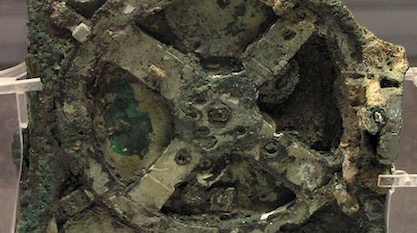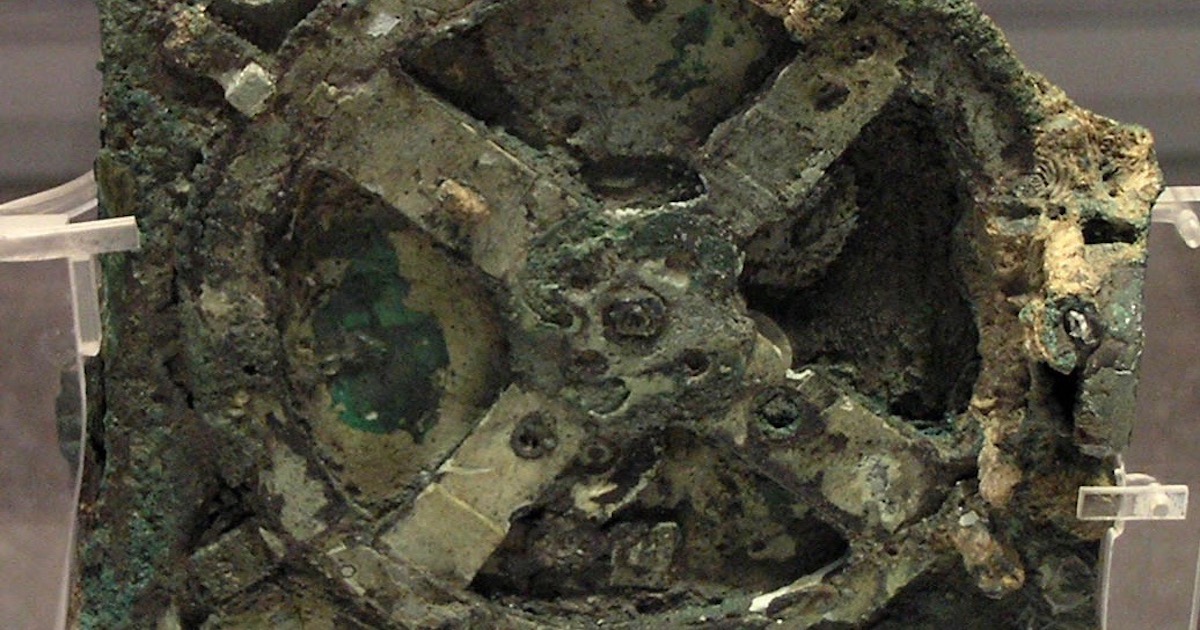 Evolution
Evolution
 Intelligent Design
Intelligent Design
DNA of Things: Embedding Machines with Replication Data


In 1901, divers brought up from an ancient shipwreck the first part of the Antikythera mechanism made by Greek inventors. Modern scientists took over a century trying to figure it out completely and make a working copy by imitation. There were no design specs in the artifact, and few inscriptions to guide them. Who made the original? Why? What was it for? How did it work? And how did they make it?
Some of these questions were eventually answered, but imagine how helpful it would have been if the Greeks had left detailed information and instructions for answering them. It would have required stacks of degradable papyri or skin parchments. Imagine further how clever it would be if the Greeks had invented devices for automatically reading the instructions, building the parts, and assembling them into a working copy.
Just a Bunny
Engineers at the Swiss Institute of Technology have been thinking about those design goals, and gave them a try. Their test artifact is simple — just a plastic bunny — but it provides proof of concept for the futuristic scenario of making replicating robots. What better material to use for the embedded instructions than good-old DNA? Layal Liverpool at New Scientist says:
A 3D-printed polyester rabbit has been embedded with DNA that contains a blueprint for printing additional bunnies. Using the information, researchers have replicated the rabbit several times, highlighting the potential for using DNA to store information in everyday objects. [Emphasis added.]
To embed the instructions in the plastic bunny, they first wrote out the instructions into 45 kilobytes of information. The information was then transcribed into the A, C, T, and G letters of DNA. To protect it, they inserted the code into nanoscopic glass beads that could be stirred into the plastic. The resin then was used by a 3-D printer to sculpt the bunny. The result was a plastic rabbit imbued with the instructions for how to make a copy of itself.
The teams put their 3D-printed bunny to the test by cutting off a piece of plastic from its ear and isolating the embedded DNA. They used a DNA sequencing machine to read the specific sequence of DNA bases, which was then translated into instructions for the 3D printer.
The 3D printer then produced a second, identical, plastic bunny, complete with DNA-containing glass spheres. The teams then used this second bunny to produce a third. They repeated this replication process four times in total. Replication was still possible after one of the bunnies had been stored for nine months.
This initial success, Liverpool says, could be expanded into a multitude of artificial products, and “could have future applications in manufacturing, where instructions could be stored locally in objects.” Everything could be “tagged” with “small bits of useful information,” a UCLA observer notices. Another observer sees long-term benefits to people of the future:
“Any potential application is still likely years away, but this study is certain to inspire creative uses we can’t predict right now,” says Calin Plesa at the University of Oregon. It is interesting to think of a possible distant future where archaeologists use the DNA embedded in human-made artefacts to learn more about our civilisation, says Plesa.
An Aha! Moment
Undoubtedly the moral of this story became evident early on to perceptive readers: This is what life has been doing since the first cell. And better yet, a cell provides its own “3-D printer” and assembler to replicate itself from the embedded instructions. The most primitive bacterium is light-years ahead of what the Swiss geniuses have done!
Evolution News has previously reported on DNA as an ideal storage medium for computers of the future (see here and here). DNA is a stable, long-lasting molecule that is exorbitant in its information capacity and density. If used to store information inside material, encyclopedias of information could potentially be embedded into machines, robots, and household goods. Automotive garages could recreate exact replacement parts on the spot for broken ones. Astronauts could replace parts in space stations or moon bases without having to call Houston. Artists and sculptors could provide digital watermarks to prevent forgery. The applications are endless and excite the imagination.
An Embedded World
And yet our world is already embedded with digital code! It’s everywhere (see “Environmental DNA: Information Covers the Globe”). Why can’t scientists read it, infuse it into nanospheres, stir it into the resin, and create organisms with their 3-D printers? Well, read it they can do; the number of genomes that have been sequenced grows apace. Scientists can manipulate the information somewhat. Craig Venter altered the code of a bacterium and inserted it into a bacterial cell to create a “synthetic organism.” But beyond such trivial steps, humans are unlikely to come anywhere close to doing what a humble microbe can do. In a living cell,
- The code is read and transcribed by nanomachines.
- The transcriptions are regulated and spliced by other machines.
- The modified transcripts feed into the “3-D printer,” the ribosome.
- In the ribosome, the transcripts are translated into another code.
- The “parts” themselves are codes, not hardened materials: proteins are coded strings of amino acids.
- The parts are carefully folded into their functional shapes, sometimes with help from other machines.
- Many of the shapes having moving parts, and are operated by ATP “energy coins.”
- The entire code is replicated by machines, and the cell divides.
- Life moves under its own power.
- Life makes its own building materials by ingesting substances from the environment.
This list of astonishing capabilities could be extended. Consider one other complex aspect of life: sexual reproduction. Rabbits multiply, we know, but the plastic ones in the Swiss lab are not likely to fill up the shelves without intelligent help from the lab workers. Even so, they would be identical clones. Can the lab scientists get two of their bunnies to come together and produce new individuals with their own unique codes? No, thank goodness — not anytime soon!
DNA of Things
An “Internet of things” has been in the news, as we anticipate, with no little dread, Internet-connected home appliances. The research team that made the plastic rabbits envisions a coming “DNA of things” emerging from their groundbreaking work. They say in their paper in Nature Biotechnology:
DNA storage offers substantial information density and exceptional half-life. We devised a ‘DNA-of-things’ (DoT) storage architecture to produce materials with immutable memory. In a DoT framework, DNA molecules record the data, and these molecules are then encapsulated in nanometer silica beads, which are fused into various materials that are used to print or cast objects in any shape. First, we applied DoT to three-dimensionally print a Stanford Bunny that contained a 45 kB digital DNA blueprint for its synthesis. We synthesized five generations of the bunny, each from the memory of the previous generation without additional DNA synthesis or degradation of information.
The researchers performed additional tests, and thought of applications.
To test the scalability of DoT, we stored a 1.4 MB video in DNA in plexiglass spectacle lenses and retrieved it by excising a tiny piece of the plexiglass and sequencing the embedded DNA. DoT could be applied to store electronic health records in medical implants, to hide data in everyday objects (steganography) and to manufacture objects containing their own blueprint. It may also facilitate the development of self-replicating machines.
Self-replicating robots that take over the galaxy can be left to movie scriptwriters, but the other applications seem readily possible. Each one would be a product of intelligent design. How much more should living cells be regarded as pinnacles of design perfection, operating flawlessly generation after generation with their own embedded information?
Photo: A detail from the Antikythera mechanism, via Wikimedia Commons.
